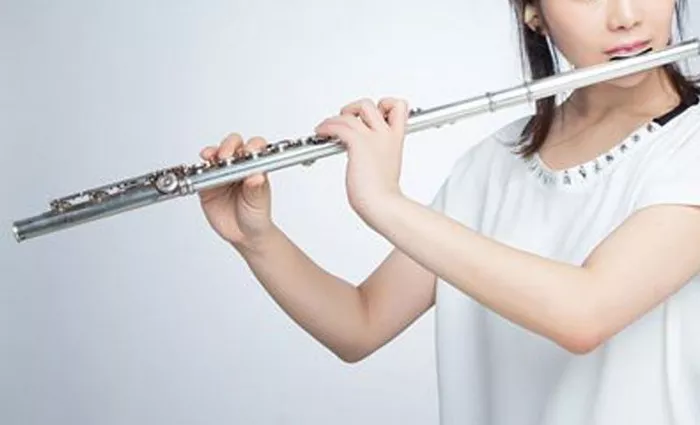Learning to play the flute is an exciting and rewarding musical journey, and mastering the basic scales is a crucial foundation for any aspiring flutist. Among the fundamental scales, the C scale serves as a starting point, providing a solid introduction to key fingerings, breath control, and musical notation. In this article, we will explore the step-by-step process of playing the C scale on the flute, offering valuable insights for beginners on their path to flute proficiency.
Understanding the C Scale: A Musical Building Block
The C scale, also known as the C major scale, is a fundamental sequence of seven notes that form the basis of many melodies in Western music. It consists of the notes C, D, E, F, G, A, and B, with the eighth note being a higher octave of C. Learning to play the C scale on the flute not only introduces beginners to essential fingerings but also helps in developing aural and technical skills.
Flute Basics: Hand Position and Posture
Before delving into playing the C scale, it’s crucial to establish proper hand position and posture. Hold the flute horizontally with both hands, keeping the left hand closer to the embouchure hole. Ensure that the fingers of both hands are covering the appropriate holes without any gaps. Maintain a relaxed yet upright posture, allowing for unrestricted airflow and comfortable finger movement.
Embouchure and Breath Control: Producing Clear Tones
Creating a clear and resonant sound on the flute requires mastering embouchure—the way the player shapes their mouth and lips. Form a small, focused aperture with your lips, directing the air across the embouchure hole. Practice producing a steady stream of air while maintaining a consistent tone. Developing proper breath control is essential for achieving a smooth and connected sound as you progress through the notes of the C scale.
Fingerings for the C Scale: Step-by-Step Guide
Begin by learning the fingerings for each note in the C scale. The C scale on the flute starts with the note C, which is played by covering all the holes with the left hand while keeping the right hand’s fingers lifted. Proceed to D by lifting the third finger of the left hand, E by lifting the first and second fingers of the left hand, and so on. The full sequence of fingerings for the C scale is C-D-E-F-G-A-B-C.
Practice transitioning between these fingerings slowly, ensuring each note is clear and distinct. Pay attention to the proper lifting and lowering of fingers to avoid unintentional squeaks or airy sounds.
Ascending and Descending: Navigating the C Scale
Once you are comfortable with the individual notes, practice ascending and descending through the C scale. Begin with the low C and gradually ascend to the higher octave C. Focus on maintaining a smooth and even transition between each note. When descending, concentrate on controlling the airflow to prevent abrupt changes in tone. Consistent practice of both ascending and descending sequences enhances your overall fluency with the C scale.
Metronome Practice: Building Rhythmic Precision
Integrate a metronome into your practice routine to develop rhythmic precision. Start by playing the C scale at a slow, comfortable tempo and gradually increase the speed as you gain confidence. The metronome helps in honing your sense of timing and ensures a steady pace, which is crucial when playing with other musicians or in ensemble settings.
Dynamic Expression: Adding Nuance to the C Scale
While the C scale serves as a fundamental exercise, it’s essential to infuse dynamic expression into your playing. Experiment with variations in volume, articulation, and phrasing as you traverse the scale. This not only enhances your overall musicality but also prepares you for more advanced repertoire where dynamic nuances play a crucial role.
Musical Notation: Reading and Playing the C Scale
Understanding musical notation is a fundamental skill for any flutist. Familiarize yourself with the sheet music for the C scale, recognizing the placement of notes on the staff and corresponding fingerings. Practice playing the C scale while reading the notation, gradually transitioning from visual recognition to aural proficiency. This skill will prove invaluable as you advance to more complex musical pieces.
Ear Training: Developing Aural Skills
As you practice the C scale, focus on developing your ear by listening intently to the sound produced. Train yourself to recognize the intervals between notes and aim for pitch accuracy. Ear training is a vital aspect of flute playing, enabling you to play in tune and respond dynamically to different musical contexts.
Articulation Techniques: Enhancing Flute Artistry
Articulation, or the way you articulate each note, contributes significantly to your flute playing. Experiment with different articulation techniques, such as legato, staccato, and accents, while playing the C scale. Each articulation style adds a layer of expressiveness to your playing, allowing you to convey different emotions and moods through the simple framework of the C scale.
See Also: 7 Pricing Factors of Bamboo Flutes: A Complete Guide
Conclusion: The Gateway to Flute Mastery
Mastering the C scale on the flute is more than a technical exercise; it’s a gateway to flute mastery. By paying attention to hand position, embouchure, breath control, and fingerings, aspiring flutists can build a solid foundation for their musical journey. Consistent and focused practice, combined with an emphasis on musical expression and aural skills, transforms the C scale from a beginner’s exercise to a tool for artistic exploration and development. As you embark on your flute-playing adventure, remember that each note of the C scale brings you closer to unlocking the full potential of this captivating and versatile instrument.


